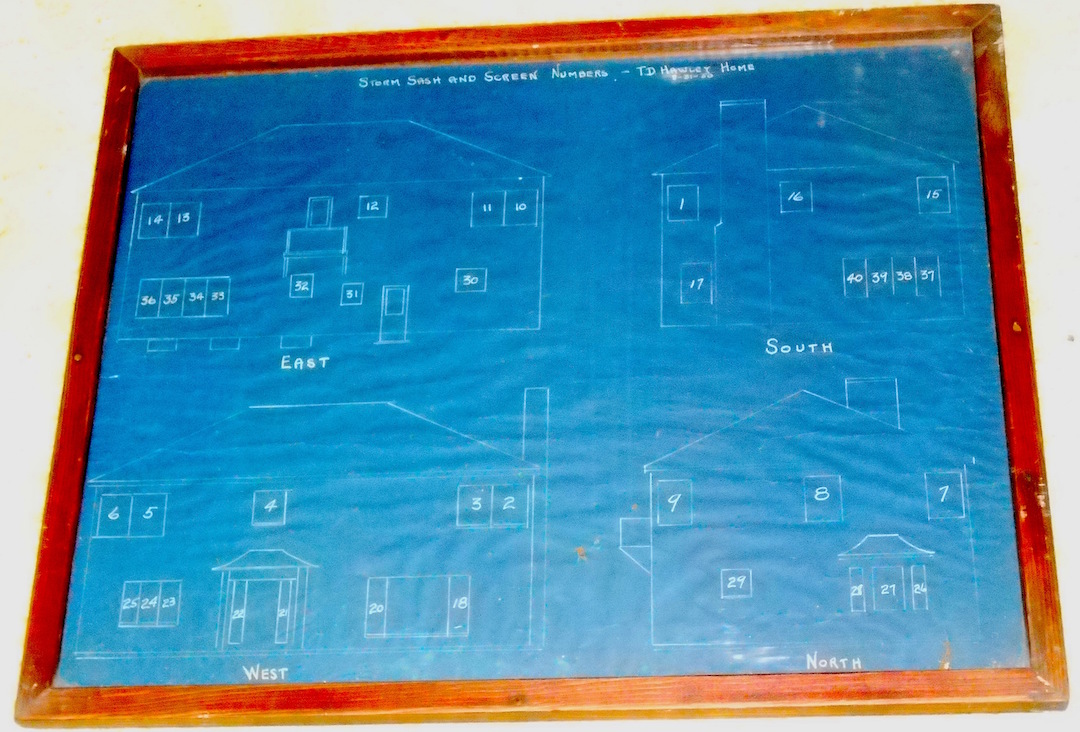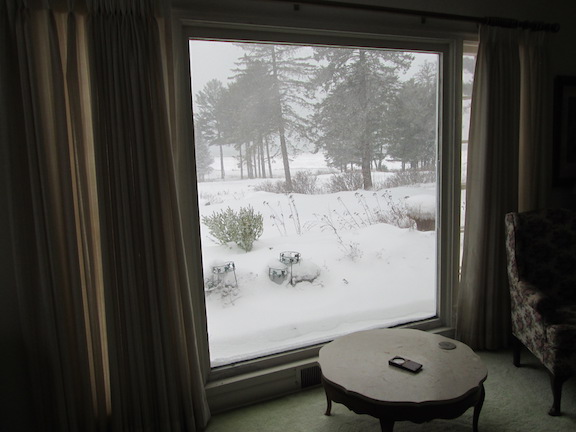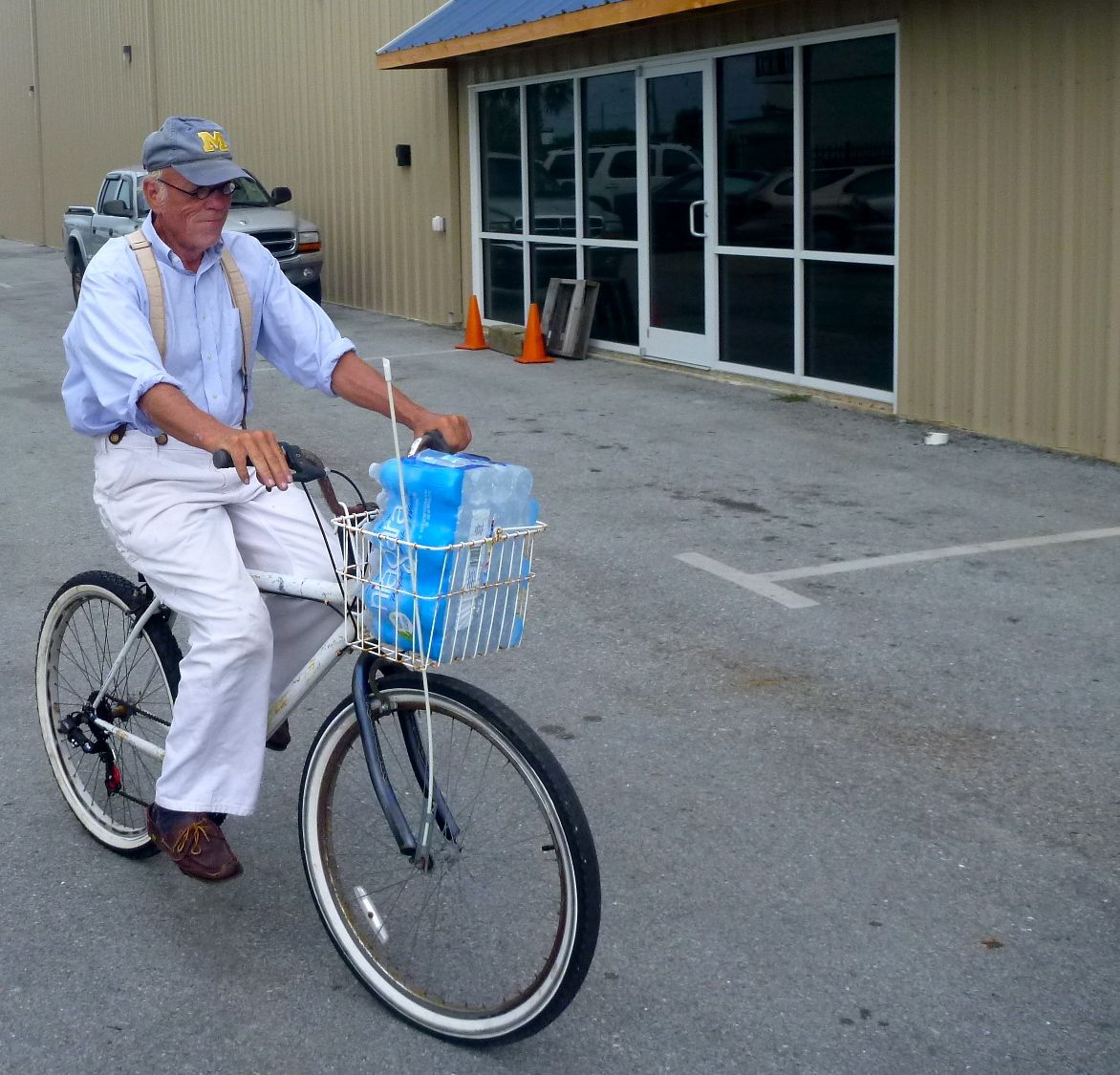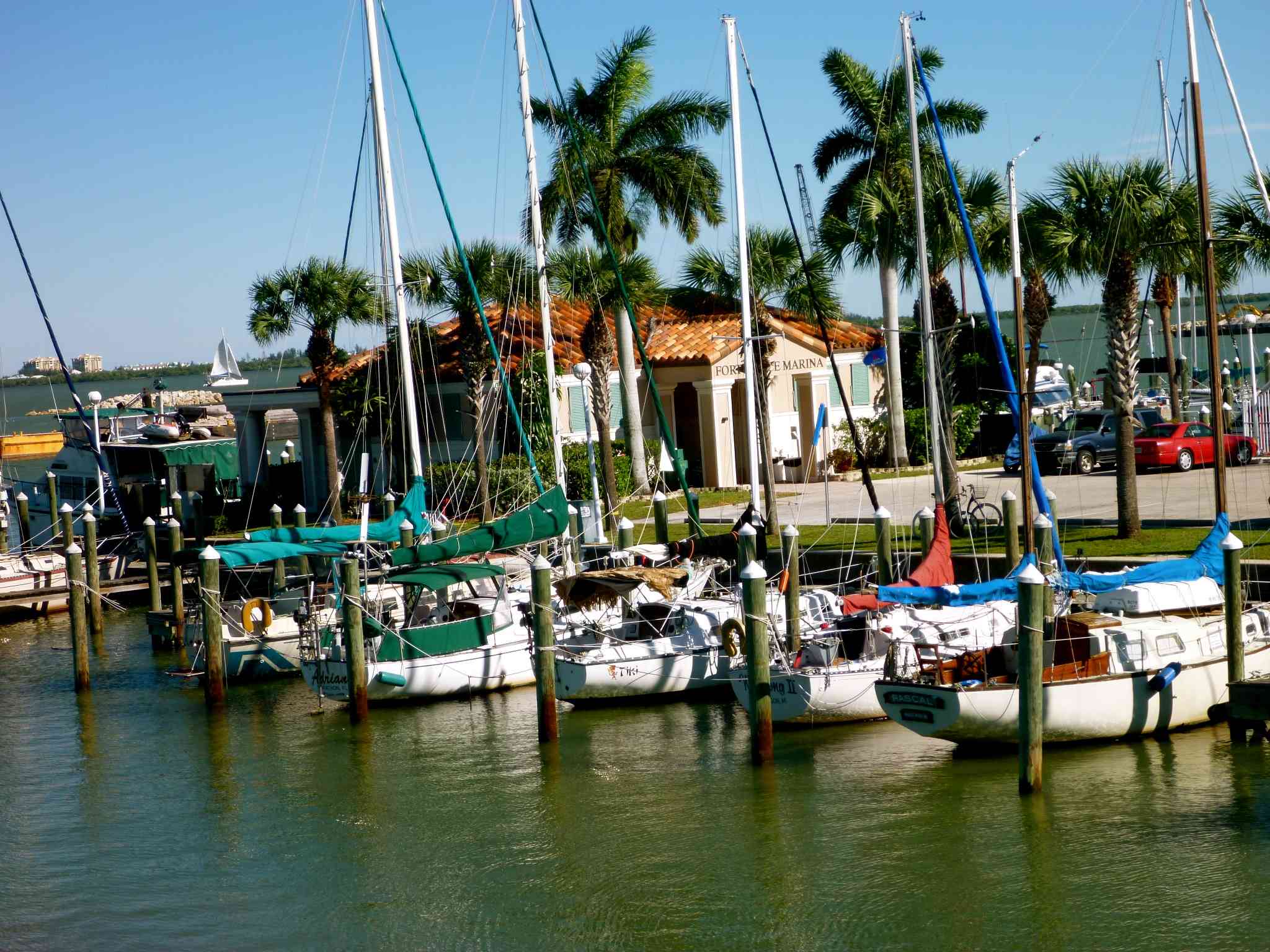Introduction - The Historic Gorman House
The 125 year history of of the Gorman House, the Gorman
House Beach
House and the land, involves a interesting and varied cast of
characters that are connected to major events in the history of
the small village of Ontonagon, Michigan located on the south shore of
Lake Superior.
Involved were eastern capitalists, lumbermen, miners, fisherman;
government officials including: one judge, a county supervisor, a
county surveyor, a county register of deeds, and two prosecuting
attorneys, Major executives including: a businessman who
opened one of the country's largest underground copper mines, and a
mine president that closed the mine, a lumber company president who had
bad luck with fire, a publisher who published the Upper Peninsula's
first area-wide telephone directory, the business manager of ship
building company, and a paper mill president.
One land owner helped to start the White Pine Mine, a mine that
produced 4.4 billion pounds of copper, developed 13 square miles of
underground works and reached a depth of 2,700 feet.
Two owners of the Gorman House went to Federal prison, and one owner, a
professional librarian, worked as a law librarian.
The wife one one owner was a model for
her feet and used her kids as models.
It is said the the wife of one owner
never went in the kitchen. That was where the cook worked.
At least two owners were member of Rotary. One owner was member
of Rotary One, the first Rotary Club in the United States.
One owner published the first area-wide phone book and yellow pages in
the Upper Peninsula and developed one of the first yellow pages web
site;
The son of one owner became a renown transportation and maritime
attorney in New York City, retired, and built a house across from the
Gorman House where he lived as a child.
The Gorman House beach house building housed Ontonagon's first public
library was moved by a owner who moved the building from downtown
Ontonagon to its present location on Lake Superior.
The most prominent visitor was probably Michigan's governor Mitt Romney
Sr., his son and wife. Many extra phone lines were installed in
the house.
Two owners also owned Ontonagon's
historic courthouse which is listed on the National Register of Historic Places.
One of these owners turned the court room into s basketball court.
The Gorman House was built twice. A
fire destroyed it before it was lived in and it was rebuilt.
One owner turned the “gun room” into a
sauna and put a hot tub in the garage.
One owner used the house as Ontonagon's
first bed and breakfast.
One owner never allowed the help to come
through the front door.
One owner helped to move valuables from
the house while the FBI was closing in.
.
The general structure of this site is based on the the 34 page Gorman
House abstract by Judith D. Roehm of the Ontonagon County Abstract
Office. It has 75 entries beginning with entry 1 when the land is
obtained from the United States government.

The 165 year history of the Gorman House begins in
1851.
Millard Fillmore, a Whig, is the 13th President of
the United
States. The yacht “America” wins the first America's Cup
race. The
New York Times starts publishing at 2 cents a copy. A fire
devastates
the Library of Congress. 35,000 volumes are destroyed. A
Baltimore
dairyman sets up the 1st ice-cream factory. Michigan had been a
state
for only 20 years.
On December 2, 1851, the United
States of America
issued to Simon Mandlabaum of Houghton, Michigan, a land patent to lot
Three (3), Sec. 19, T. 52 N. R. 39 W. in Ontonagon County,
Michigan.
This patent includes the land where the Gorman House
would eventually be built.
A land patent is
an exclusive
land grant made by a sovereign entity in this case the United States
government, with respect to a particular tract of land. To make such a
grant “patent”, a sovereign must document the land grant, securely sign
and seal the document (patent), and openly publish the documents for
the public to see. An official land patent is the highest evidence of
right of title and interest to a defined area.
This land
was once part of the
territory of Wisconsin. As the result of the so called “Toledo
War.”
of 1936 a strip of land was in given to Ohio so they would have a port
on Lake Erie. In return the top of Wisconsin was conseded by
congress
to the new State of Michigan. This created the “Upper Peninsula,”
of
Michigan.
At the time
most
people considered the Upper Peninsula as completely worthless.
But as James Jamison documents in This
Ontonagon County,
people soon realized the value of he the vast mineral resources and
vast forests of White Pine. It is said that the U.P. produced
more
wealth than the California Gold Rush.
Simon
Mandelbaum, was an early
mining pioneer in the Keweenaw Peninsula and Ontonagon area. In 1840's
he applied for and was granted Lease 36 for land in Ontonagon County in
the name of the Silver and Copper County of Ontonagon Rapids. In 1851,
he was on the original board of directors of the Phoenix Mining Co. and
was agent-in-charge of the Phoenix Mine from 1850 to 1853. As
agent-in-charge he was instrumental in finding some ancient mining pits
for the New Phoenix Mine and five other Keweenaw mines.
Evident
suggests that he
attended The University of Michigan in Ann Arbor and studied
engineering. He was very successful. This name appears in a
Ph.D.
Dissertation from the Wayne County University in Detroit by Alexandra
McCoy on “economic elites.” In 1880, Simon Mandelbaum
had an annual
income of $10,000. In today's dollars it would be nearly
$280,000.
He worked
to the end of his
life. The June 8, 1876, edition of the Portage Lake Mining
Gazette
reports “the death of Mr. Simon Mandelbaum has interfered with certain
explorations on Isle Royale which were to have been carried out this
season.”
In 1929, a
Simon Mandelbaum
Scholarship was established by the late Mary S. (Mandlebaum) Madelle of
Detroit for those attending the University of Michigan, in memory of
her father, Simon Mandelbaum.


The August 2015 issue of
American Philatelist has a picture of a rare envelope addressed to
Simon Mandelbaum. “This 1853 3-cent stamped envelope”,” says
author
Petoskeyl, “was carried outside the mail system by ship to Simon
Mandlebaum, Eagle River, Lake Superior, Mich. The notation of which
ship carried this piece was torn away during its opening.”
This
3-cent stamped envelope is from 1853 and is one of the early government
stamped envelopes to be manufactured.
In 1851,
the rush to mine copper
in Michigan's Upper Peninsula was
underway. Samuel
Knapp
discovered what was to become the very profitable Minesota
Mine. (The
Minesota mine was supposed to be spelled like the state – Minnesota –
but a secretary misspelled it when typing the incorporation papers, so
it remained that forever.) In four years of operation, the investors
who were mainly Boston capitalists doubled their investment ion the
mine. The American Civil war resulted in a great need for copper,
and
it said that Ontonagon County mines provided over 50 percent. The
copper rush was on. People rushed in to Ontonagon County.
According
to James K. Jamison in his classic book, This Ontonagon County,
Jamison says that no one probably ever know how many mining companies
were organized to exploit the mineral resources of Ontonagon
County.
One careful search discovered one hundred and twelve corporations with
mining property existed.
Not far
away in Ontonagon, “copper was king.”
The
Ontonagon River is the
largest river on the south shore of Lake Superior. Soon the port
of
Ontonagon became the busiest port on Lake Superior which created the
need the was need for a lighthouse. In 1851, a wooden lighthouse
was
constructed on the west side of the river's mouth to guide ships to the
port from which copper was being shipped from the mines upriver.
In 1951
business was booming in
Ontonagon and a hotel the Bigelow House was under construction.
It was
a frame structure, five stories high, and eighty feet front by 110
feet. deep, with a basement, which was first occupied by the Miner
newspaper office, post office, County Clerk's office, a Justice of the
Peace office, a clothing store, a billiard room and bar.
Fortune-hunting prospectors gathered at the five-story hotel to
exchange information about possibilities for striking it rich here and
elsewhere.
The Lake Superior Miner
was Ontonagon's first newspaper. A later owner of the Gorman
House
would, for a brief time, would publish the Miner once again.
In 1852,
the abstract documents
that Simon Mandlebaum and his wife Mary transferred the land to Joseph
W. Clark of Boston in trust for Balch, Clark and Mandlebaum of Boston,
Mass.
In 1855,
Simon Mandlebaum and his wife Mary sold half the property to Livi Hanna
of New Lisbon, Ohio.
Time
passes. 25 years to be exact.
It's
1880. Building of the
Panama Canal begins, Thomas Edison patents the incandescent lamp, James
A. Garfield becomes president, and John Philip Sousa becomes new
director of U.S Marine Corps Band.
In 1880,
the land on which the
Gorman House was to be built was sold to Byron W. White of Ontonagon
County. White was a supervisor of the County Board, county
surveyor
and a notary public. He probably did not pay this taxes on the
land.
In 1881,
the land was sold by a
tax deed to the Ontonagon and Brule River Railroad Company.
The
O&B RR date back to 1857 when the State of Michigan authorized by
an act to grant six sections of land to aid in the construction of the
Ontonagon and State Line Railway. A survey was made, but
financial
issues caused a suspension and the project was abandoned for
years. So
long that most people seemed to have given up and forgot the grant.
In the
previous year, 1880, a
new Ontonagon resident, a Timothy Nester, revised the rail project and
the Ontonagon and Brule River Railroad Company was formed and a new
survey done from Ontonagon to Rockland. The following year the
Michigan legislature passed a bill defining the conditions of a line
from Ontonagon to the intersection of the Brule River with the state
line between Michigan and Wisconsin. The bill provided that the
first
20 miles be completed in one year and the entire line by 1886.
In
1885, Ontonagon which was settled in 1842 was incorporated as a
village
A year
later, in 1886, the
Ontonagon County Courthouse was built on the public square. The
Courthouse is a two-story Romanesque Revival structure, built of brick
on a sandstone foundation. Three sides have similar facades a
central
entrance in a gabled pavilion flanked by tall double-hung windows. The
stone window lintels form part of a beltcourse that circles the
building. A bay window is above the entrance, and the hipped roof has
projecting dormers and a glass-roofed dome at the peak. The rear sports
a rectangular addition. The courthouse is currently on the
National
Register of Historic Places. Two future owners of the Gorman
House
were also be owners of the courthouse. More on this later.
Between
1886 and 1923 Byron
White and M. A Powers of Ontonagon are dealing real estate and buying a
lot of land ...mostly from the State of Michigan.
M.A. Powers
was register of
deeds and Ontonagon County clerk. He was elected and served part
of
his term and then appointed H.M. Power in his place. Apparently
the
Board of Supervisors were not happy with this arrangement and appointed
Will J. Coulter to fill M.A. Powers' vacancy. H.M. Powers
declined to
recognize Coulter and, as they say, “held the fort” until the
Circuit
Court recognized Coulter as clerk.
In 1923,
Sarah H. M. White, the
widow of Bryon White, now living in Spokane, Washington, sold the
Gorman House land to Joseph M. Donnelly of Ontonagon.
Joseph M.
Donnelly was Probate
Judge, 1920-24 and Prosecuting Attorney, 1924-1928, and
1930-1932. In
1934 lumber was in great demand and Donnelly sold the land to the
Northern Logging Company, a Wisconsin corporation. Secretary to
the
corporation was Walter Gorman of Wausau, Wisconsin.

2 - The
Gormans 1936-1949
Not
unlike Simon Mandlebaum, Walter Gorman was a man of means before moving
to Ontonagon. The U.S. Census of 1920 records the following facts.

Not everyone has a servant.
The Gormans live for 13 years in Ontonagon, where he
dies at the age of 62.
THE NORTHERN LOGGING COMPANY
LAKE SUPERIOR LUMBER COMPANY
GORMAN LUMBER COMPANY
The Northern Logging Company was organized about 1925. With a
corporate change in December, 1936, it became the Lake Superior Lumber
Company until December 31, 1946, when Walter Gorman became the sole
owner, and the company became known as the Gorman Lumber Company.
The logging ended August 27, 1948, and the sawmill operations on April
27, 1949. In December, 1949, the mill machinery was sold and
trucked to Kalispell, Montana. The corporation was dissolved in
December, 1950.
Walter T. Gorman
In the passing of Walter T. Gorman, Ontonagon has
lost another of its most prominent citizens, one whose passing will be
felt by the entire community, both in a businessand social way.
Almost immediately upon his arrival in Ontonagon Mr.
German became a leader in all matters for the good of this
community. He took an active part helping Ontonagon become a
leader of all Upper Peninsula communities in the Red Cross drives, the
various bond drives, the Rotary and golf clubs, and it was through his
dynamic energy, personality and ability that the final hurdles in the
drive for the Ontongon Memorial Hospital were made.
He gave generously of his ability and experience and
it was with great satisfaction to himself es well as to the people of
the village that the building of the hospital was started
and brouglit to a succesful conclusion.
Mr. Gorman's advice and council was sought from many
individuals and groups and it was always given willingly.
He was loved by his many employees, for whom he was
always working for their betterment.
Mr. German came to Ontonagon about thirteen years
ago, and since that time his thoughts were always for the betterment of
Ontonagon. His work with the German Lumber company was about
completed, however at the time or his sudden death he was making plans
for disposing of his plant to some interests who would carry on in
Ontonagon.
Mr. German was one of the first organizers of the
Ontonagon Chamber of Commerce and one of its first directors, he was a
leading personality in the local chapter of Knights of Columbus and it
was largely through his interest and leadership that the local chapter
has thrived.
The citizens of Ontonagon are deeply grieved at the
passing of Mr. Gorman and extend their deepest sympathy to the bereaved
family.
Walter. T. Gorman Passes Away
Suddenly
The Village of Ontonagon was shocked and saddened Wednesday
to learn or the death or Mr. Walter T. German. His passing
Occurred
very suddenly from a heart attack suffered while he was at his. office
Wednesday morning, June 8th. Mr. Gorman was 62 years having
been born in Marathon County. Wisconsin on February 28, 1887.
He is survived by his wife and two children; Mr. Walter Thomas
German. Jr. of Ripon. Wisconsin and Miss Phyllis Gorman of North-
field, Minnesota. He also has a sister. Mrs. J. L. Selover of Merrill.
Wisconsin and two brothers. Mr. Edward P. Gorman of Wausau and
Mr. Ralph Gorman of Oakland. California. Mr. German was an active
and devout member of the congregation of Holy Family Catholic
Church and also belonged to many organizations in this community
and outside among them being the Knights of Columbus, the
Ontonagon Rotary Club, the Hospital Board and the Golf Club.
He was a director of the Northern .Hemlock and Hardwood
Manufactures Association and several other lumber associations.
The body was taken .to the family home from the Allen-Cane Funeral
Home Wednesday night. Services will he held Friday morning from
Holy Family Catholic Church. Burial will be in,Wausau, Wis.
The Gorman
House
The Gorman House was built soon on his
arrival. Actually it was built twice, since the first burned
before being lived in. It is thought that leenseed soaked rages
started the fire. This just the beginning of the Gorman's problem
with fire.
The house was built north of the village of
Ontonagon a large sand dune overlooking Lake Superior. For the
most part all the trees were virgin White Pine, manly that still exist.


Walter Gorman and his son Tom in front of the Gorman
House




3 - The
Hawleys 1949-1978
Fishing was once a thriving fishing industry of the late 1800's and
early 1900's. One fishing tug, The Tramp, was owned and operated by the
Hawley Brothers of Ontonagon during the late 1800 and early
1900s. Ontonagon fisheries had supplied such delicacies as
whitefish, lake trout, and "lake superior oysters" (fish livers).
These "oysters" were so prized that they were shipped off to Chicago
and New York restaurants.



4 - The Potts
1978-1981




Judge Hears From Residents On Smurfit-Stone Plant Closure
By PEG BRICKLEY
The 182 jobs lost when Smurfit-Stone Container Corp.
shuttered its corrugated paper-making plant in Ontonagon, Mich., barely
rate a blip on the dismal unemployment screen in that state, which has
lost hundreds of thousands of jobs over the past decade.
Lost jobs are also a common sight in the U.S.
Bankruptcy Court in Wilmington, Del., which has watched jobs disappear
by the tens of thousands as major corporations have collapsed in recent
years.
But a flurry of letters from residents has won
Ontonagon a special hearing Thursday before Judge Brendan Shannon, who
is presiding over Smurfit-Stone’s Chapter 11 case in Delaware.
Shannon hasn’t said why he wants to hear about the plant closure, which
is the kind of routine business move that generally doesn’t require
court authorization. In an order signed Friday, he said Smurfit-Stone
is to “advise the court of the status of their assets and operations”
at Ontonagon.
The Chicago company is headed toward the exit from Chapter 11 within
months. It cited the need to protect its long-term growth and
profitability when it announced in December it would close the
Ontonagon plant, as well as one in Montana.
In
letters to the court, residents of the sparsely populated Michigan
Upper Peninsula raised the specter of extreme environmental harm if the
plant that has supplied jobs to the area for three generations is left
untended. Tanks filled with acid and caustics will split in the extreme
cold, then thaw in the spring, tainting the soil and Lake Superior,
they fear.
“Please keep the HEAT on,” said a letter from Cindy
LeGault, written just before Christmas, shortly after Smurfit-Stone
said the plant would never reopen.
So far, fears of an abandoned plant have not
materialized, area residents report. In fact, after the letters started
flying to the court, a new gate, with guards, appeared at the entrance
to the mill.
Paper industry research analysts at Credit Suisse
have predicted plant closures and capacity cuts from Smurfit-Stone and
others will help push prices up for packaging materials, which have
suffered in the recession. Smurfit-Stone spokesman Mike Mullin referred
to company statements that blamed weak demand for the product and the
high cost of the facility to explain the need to shut it down.
Ontonagon residents claim the plant is profitable but is being
sacrificed to keep a lid on competition. They have asked Smurfit-Stone
to find a buyer or keep the plant in shape so they can find one
themselves.
The skills, natural resources and the customers are available, and the
Ontonagon facility is the only paper plant in Michigan to meet or
exceed standards for air and water quality, according to Bruce
Johanson, a reporter for the Ontonagon Herald and president of the
local historical society.
“Maybe they can’t make money, but that’s no reason
to destroy the town,” Johanson said.
Ontonagon residents are drumming up potential sources of financing to
start the plant up again.
“We don’t want stimulus money. We don’t want handouts. We have
potential investors,” said Debbie Dix, one of those who wrote to
Shannon. “All we want is for these people to have the right to make a
decent living.”
Ontonagon has survived previous plant closings and at least one
bankruptcy in the 90 years a paper mill has been in operation at the
site, Johanson said. The plant always comes back into operation, and
the town is prepared to hang on as long as there’s a plant standing, he
said. It’s also looking at legislation that would bar Smurfit-Stone
from razing the plant, if that’s what Smurfit-Stone has in mind.
“Just
walking away from this place is not going to be cheap for them,”
Johanson said.
Environmental scientists say the permanent loss of the plant means an
end to all of the area’s prospects because it will cost Ontonagon its
harbor, which is now dredged regularly for Smurfit-Stone’s business.
“It is doubtful that the federal government will continue to pay the
roughly $400,000 annual dredging price tag, since large freighters will
no longer need the harbor,” wrote Kent Murray, professor of geology and
environmental science at the University of Michigan, in an email. “This
means that the harbor at the mouth of the Ontonagon River, one of the
largest in Michigan’s Upper Peninsula, will begin to silt up.”
There’s
no immediate cause for concern that Ontonagon will be submerged, Murray
wrote. But the harbor will become shallower each year and less safe for
boaters, cutting “into one of the last chances this hard-hit town may
have – recreation.”
“It
would be a shame to rip down that facility,” said Ron Kinnunen, a
manager with Sea Grant, a network of university-based science programs
that work with coastal communities. Big boats that run into trouble on
the Great Lakes are finding fewer and fewer harbors deep enough to
provide safety, he said. The loss of a plant at Ontonagon means one
less safe harbor.
“That
community is going to be devastated, and it will be devastating to
coastal recreation and refuge,” Kinnunen said.
5 - The
Fischls 1981-1986
Ar
the time I was working as librarian for the Ontonagon Area School
District and had at the request of Superintendent Gregory built a
low-power radio station,WOAS. This made me part of the “local
media” and I got invited to The Kontika, a resturant in nearby White
Pine, to hear about a new ship yard coming to Ontonagon.
The local businessmen and government types were out
in full force. The presenters who had come from New Jersey showed
a little flicking film. They explained it showed a tug linked to
a tug near Japan. It looked like a home movie. Since I had
moved from Long Island, New York to Ontonagon, the presenters to be,
what can I say, “slick.” In any case, the “locals” were
hung on every word.
The best overall view about UPSCO is found in a
e-mail published in The Great Lakes and Seaway Shipping magazine.
“Franz, Are you pulling my leg or do you honestly don't know the saga
of the UPSCO tug and barge? The story was so full of scandal it
supposedly made a "60 Minutes" broadcast. (And it is well documented in
the Lake Log Chips, Inland Seas and Telescopes of the era, not to
mention newspapers nationwide.) Here is a brief summary of the story
from memory. I hope I don't have too many of the facts wrong or
distorted. Feel free to correct me if I did.
In the 1970's the Ann Arbor Railroad, like many
others, went bankrupt. It was intended to be included in the federally
created Conrail system, but was pulled out at the last minute and kept
independent. The Michigan Interstate Railway started operating the
railroad and the car ferry service out of Elberta, which was losing
money like crazy. Michigan Interstate received operating and capitol
improvement subsidies from the State of Michigan. The state quickly
learned what every other railroad carferry operator already knew, that
on a stand alone basis, they lost money.
But there was intense pressure from both shippers
and unions to keep them running. So the state commissioned a study to
find a cheaper alternative. The proposed solution was integrated
tug-barge units, kind of a new idea at the time, at least on the lakes.
The initial plan was for one tug and 4 barges. These were to be freight
only ferries, no passengers.
About this time, (I'll guess about 1978) some local
politicians in the Upper Peninsula heard about the scheme, and thought
that Michigan should build these vessels, since Michigan would pay for
them. But Michigan didn't have an active shipyard. So they proposed
that a new one be built in Ontonagon, which was very economically
depressed at the time. Through some great politicking, the proposal was
hashed out and approved. I know state funds went into it, and I think
federal funds as well.
The name of the new company was the Upper Peninsula
Shipbuilding Company, UPSCO for short. They had the main contract to
build the tug and barges, and I think they quickly got Navy contracts
as well, for barges and pontoons.
Things started to go wrong when the tug and barge
were about half built. Apparently, kickbacks were accepted by company
officials from the builder of the tug's engines. The ensuing
investigation bankrupt the company, stopped construction and landed
several officials in prison.
By that time (around 1982?) the state realized that
the most economical thing to do was to halt the carferry service and
turn the old Ann Arbor Railroad into a branch line for local service
only. Therefore the state had no need for the one tug and one barge
then partially completed. UPSCO's assets and the tug and barge were
placed on the auction block. At least one winning bidder had to
withdraw due to a lack of financing but the shipyard was finally sold.
The name of the purchasing company was Wedtech, which owned other
shipyards and defense plants. Wedtech seemed to win a suppressing
amount of defense contracts and started building more military pontoons
at Ontonagon. It was soon revealed, however, that the reason Wedtech
got so much work was because they were paying off high-ranking
officials in the Reagan administration and members of Congress. So the
doors to the shipyard were closed again.
As for the tug and barge they sat around Ontonagon
and Houghton for several years until a federal court finally had them
auctioned off. Not long after that they were back in the hands of the
government, seized by US Marshals since the newest owners were
convicted of drug smuggling and had used drug profits to purchase the
pair.
At some point they were resold and finally made
their way south (Louisiana??) where they were finally completed as the
Thunder and Lightning. (I assume it is the same tug.) And as far as I
know, there haven't been any scandals published about their current
owner, Odyssea Transportation.


6 - The Langs
1986-1988
 
Range Savings and Loan
to Gary W. Lang and Sharon H. Lang Aug 28 , 1986 Out of town
FAST. Felon #2
A versatile athlete, Gary Lange participated in
football, basketball, and track during his years (1970-74) at Michigan
Tech. It was basketball, however, that he excelled in.
Lange, who is a former vice president of the Varsity
Club, scored 1,049 points during his stay at Michigan Tech, and is
currently the 8th all-time leading scorer in Huskies history. He is
also among the top ten all-time MTU players in field goals made (418),
free throws made (213), and assists (207).
Following graduation from Michigan Tech, Lange attended Thomas M.
Cooley Law School in Lansing, Michigan, from 1975-79, earning a Doctor
Juris degree. After a five-year sting in private practice, he was named
prosecuting attorney for Ontonagon County where he has served since
1983. Lange has kept a keen interest in Michigan
Tech since leaving the institution as a student. From 1975-83 he served
as a member of the MTU Board of Contol, acting as chair during the
1981-82 school year. He is a member of the University's Presidents Club
and is also and Honorary Coach in the Huskies Club.
Former Ontonagon
prosecutor sent to federal prison for fraud
October 31, 2013 The
Daily Mining Gazette
ELPASO, Tex. - A former Ontonagon County prosecutor, who served on
Michigan Technological University's Board of Control and is in the
school's Sports Hall of Fame, was sentenced to two years in federal
prison after being convicted of a fraud scheme involving the El Paso,
Texas Independent School District.
According to the United States
Department of Justice website, on Oct. 16, U.S. District Judge Frank
Montalvo sentenced 61-year-old Gary Lange of Haslett, Mich., to two
years in federal prison and ordered him to pay more than $2.89 million
in restitution for the fraud scheme involving a services contract for
the EPISD special education program.
From 1970 to 1974, Lange played for the Tech
football, basketball and track teams, according to the Tech Huskies
website. During his time on the basketball team, he scored 1,049
points. He made 418 field goals, 213 free throws, and had 207 assists.
The Houghton native was inducted into the Michigan Tech Sports Hall of
Fame in 1988. From 1975 to 1983, Lange
served on the Tech Board of Control. From 1975 to 1979 he attended
Cooley Law School in Lansing. He was Ontonagon prosecuting attorney
from 1983 to 1988.
Also according to the
DOJ website, "In February 2009, Lange pleaded guilty to one count of
conspiracy to commit mail fraud and deprivation of honest services. By
pleading guilty, Lange admitted that from February 2003 to October
2007, he conspired with his business partner, Joseph O'Hara, of Albany,
NY, former El Paso Independent School District Associate Superintendent
Tomas Gabaldon and former El Paso Independent School District Trustee
Sal Mena to fraudulently secure and maintain a contract to provide
software to the special education department of EPISD and to provide
services to obtain federal and state reimbursement funds for special
education programs.
Lange further admitted that he facilitated O'Hara in
paying $100,000 in bribes to Gabaldon and a $5,000 kickback to Mena in
2005 for their help in securing the contract for O'Hara's company,
Strategic Government Solutions, Inc. SGS failed to provide working
software to EPISD as required by the contract and it submitted improper
claims for reimbursement funds."

7- The Lees The
Sanders The Lees 1988-Present
  
Margaret Lee and her Jag


|

Step
into my parlor – Owner Margaret Lee keeps the home fires burning and
the champagne as well as the conservation, bubbling at The Gorman
Hoouse Bed and Breakfast in Ontongon. (Gazette photo by
Cindi Perkins)
Bed and Breakfast in Style
By CYNDI PERKINS Gazette writer
ONTONAGON — Margaret and Tom Lee didn't have a bed and breakfast
business in mind when they purchased the Gorman House in July 1988. The
spacious estate on Lakeshore Drive in Ontonagon Village was built in
1943 by the last of the area lum-ber barons, Walter Gorman. The Lees,
active in corporate philanthropy and publishing, planned to use the
home as a personal and business-related retreat. "We opened by
acci-dent," Margaret Lee says.
A couple from Minneapolis showed up at the old
Ontonagon County Courthouse, another historic building the Lees have
acquired, and said there were no hotel rooms available in the area.
Lee's talents as a hostess were evident even then. She asked the couple
to stay at The Gorman House, then under restoration. for their week's
vacation. "
They were the ones who convinced us this could
work," she says. The Gorman House officially opened in August, offering
area business and leisure travelers a chance to travel back to a time
and place when gracious living and luxury were the watchword. "For
those who want to get to know a community, its history, and take a
personalized vacation, this is the way to travel," says Lee.
A bedroom with private bath and living room
suite or a smaller bedroom with private bath are available. A maximum
six guests are allowed full run of the house, including the only
modernized rooms, the kitchen and spa. The spa room boasts a hot tub
and sauna.
Other modern touches include in-suite
television and videocassette recorder. The Lees say they plan to take
out a satellite dish out in by a former owner, since it's not
compatible with the aura of yesteryear they want to create.
Visitors are free to roam ten acres of virgin
white pine-studded and landscaped grounds and a 1,000 foot private sand
beach on Lake Superior. The Lees researched, talked to area people who
remembered the house as it was and enlisted aid from Ontonagon High
School art teacher Sherry McCabe in furnishing the house with antiques
and 40's vintage items.
All furniture is from the Upper Peninsula, Lee
says. The rooms, sunlit by lots of windows, plushly car-peted, wood
furniture gleaming, must be seen to be appreciated, from the suite
holding Mrs. Gor-man's original vanity table to the wide expanse of
living room accented by an antique pump organ from Ishpeming and a
marble fireplace.
Champagne is served evenings by the fire and a
coffee tray appears outside the bedroom door mornings so guests can
revive them-selves before going down to breakfast. "Anything we can do
to pamper anybody, we will," Lee says. In the spacious dining room Lee
serves a homemade continental break-fast. Fruit cup, fresh-baked
muffins and plenty of coffee are typically on the menu. "Bed and
Breakfasts will never replace hotels or motels," Lee says, noting that
this kind of accomodation isn't for everyone.
"There's a tremendous amount of cooperation"
between Gorman House and other more conventional lodging facilities in
the way of referrals, rate comparisons and passing on information, she
says. One might think unfamiliar faces passing through would infringe
on their privacy, but the Lees, married almost 25 years, say they eniov
their guests. Most people don't stay strangers for long.
Recent Gorman House guests range from local
honeymooners to out-of-town business travelers seeking a peaceful
retreat after conferences and meetings.
The effervescent Lee, a born "people person"
gifted in the art of conversation, keeps a guest scrapbook and notes
which guests have compatible interests so the next time they return
she'll be able to line up visitors and activities customized to
personal tastes.
Arranging guest mini-courses in regional
cooking and crafts is also in the works, she says. Both Lees make it a
point to keep up on historical re-search, since they need to answer
guest's questions on everything from Lake Superior shipwrecks to copper
mining.
The Gorman House is listed in "Michigan's Bed
and Breakfast and Historic Inns" published by the Michigan Department
of Commerce Travel Bureau. Rates for one or two are $65 per night, with
$10 extra charged for each additional person. For more information call
toll-free nationwide (800) 000-000 or within Michigan (906) 000-0000.
Vacation Tip of the Month
Living
like a Lumber Baron
By Ted. T. Kitzen
ONTONAGON - A dazzling Lake Superior sunset silhouettes towering white
pine trees, providing the perfect backdrop for The Gorman Estate, a
unique vacation rental in Ontonagon, Michigan.
Tourists seeking the serene mood of the north
don't expect to find"one—in—a million" vacation lodging. A former
lumber baron's estate isn't usually the type of vacation accommodation
that is available inthis remote area. Who would believe that a family
or group of friends could rent an entire historic estate for about the
same price as modest housekeeping cottages?
The German Estate is becoming just as much of
a draw for tourists as the usual reasons for traveling to the north.
Renting an estate makes it all more magical. Tourists use the Gorman
Estate as an exquisite jumping off point to explore the scenic northern
wildnerness and panoramic beauty of Lake Superior.
Located on Lakeshore Drive in the village of
Ontonagon, the estate offers seclusion, situated on Lake Superior and
surrounded by 10-acres of forested grounds, manicured lawns, and rose
hedges. Less than five minutes away from Ontonagon's shops,
restaurants, and well-stocked supermarkets, vacationers have the
convenience of being right at home. However, the true north is close at
hand, too. The Porcupine Mountains Wilderness State Park is only
30 minutes from the Gorman Estate. It doesn't take long, at all to
reach pine—studded bluffs, waterfalls, rocky cliffs, virgin timber,
deep forests, and driftwood-strewn beaches. The Gorman Estate is
situated in the heart of the north woods, attracting landscape lovers
from aroundthe world.
Called a "hidden pocket of America" by
National Geographic, this coastal area in Michigan's U.P. offers an
abundance of unhurried and uncrowded recreation opportunities.
Vacationers take their pick of activities, including hiking, camping,
jeeping, biking, swimming, fishing, canoeing, sailing, rock bounding,
and scenic photography.
Suited to the wishes of every tourist, the
Gorman Estate can be a sumptuous "base camp" for hikers or it can be
just the right place for people looking for total relaxation. "When I'm
on vacation, I think getting out of bed before noon is unduly
vigorous," commented
a recent visitor. In both cases, The Gorman Estate fit the varied
requirements of these vacationers.
The pine-scented pathways, ancient evergreens,
rose hedges, circle drive, and wide expanse of lawn invite guests out
of the house and down to the private sand beach on Lake Superior to
take in the grand view of the Porcupine Mountains quite a trick,
considering what's inside.
What's inside is serene, giving every guest a
sense of well-being and supreme comfort. "Men especially love this
house," say the present owners, Thomas and Margaret Lee. "It was
originally built in 1943 by the last lumber baron in our area. He and
his wife wanted large, light-filled rooms with big windows and
tremendous views, no matter where one looked. They certainly got what
they wanted!" The house is tastefully furnished with antiques you can
actually sit on, overstuffed vintage sofas, Oriental rugs, and
chandeliers. Subdued lace-weave spreads drape top-of-the-line
beds. Nothing is too frilly or over-decorated. Thick carpeting and
marble fireplaces, upstairs and downstairs, add to the charm. Many
l940-era collectibles, including lamps, mirrors, radios, and even old
magazines, are placed where appropriate.
Formerly a popular Bed & Breakfast
facility, the Gorman Estate has been turned into a one—of-a-kind
lodging for tourists. "Our publishing business takes priority right now
over operating a Bed & Breakfast," say owners Thomas and Margaret
Lee. "But many of our guests still want to stay at the estate. So we
simply turned the house over to all tourists." The Lees themselves work
and live in another historic building they acquired, the Old Ontonagon
County Courthouse in Ontonagon. That building has been granted historic
landmark status. "Living in a courthouse has its benefits," says Tom
Lee. "Itgives us a chance to say things like ’Objection overruled'."
The Gorman Estate is a member of the Upper
Michigan Travel and Recreation Association and a member of the
Ontonagon County Chamber of Commerce. For complete details and vacation
rental rates, contact:
|






























































































 .
. 



























